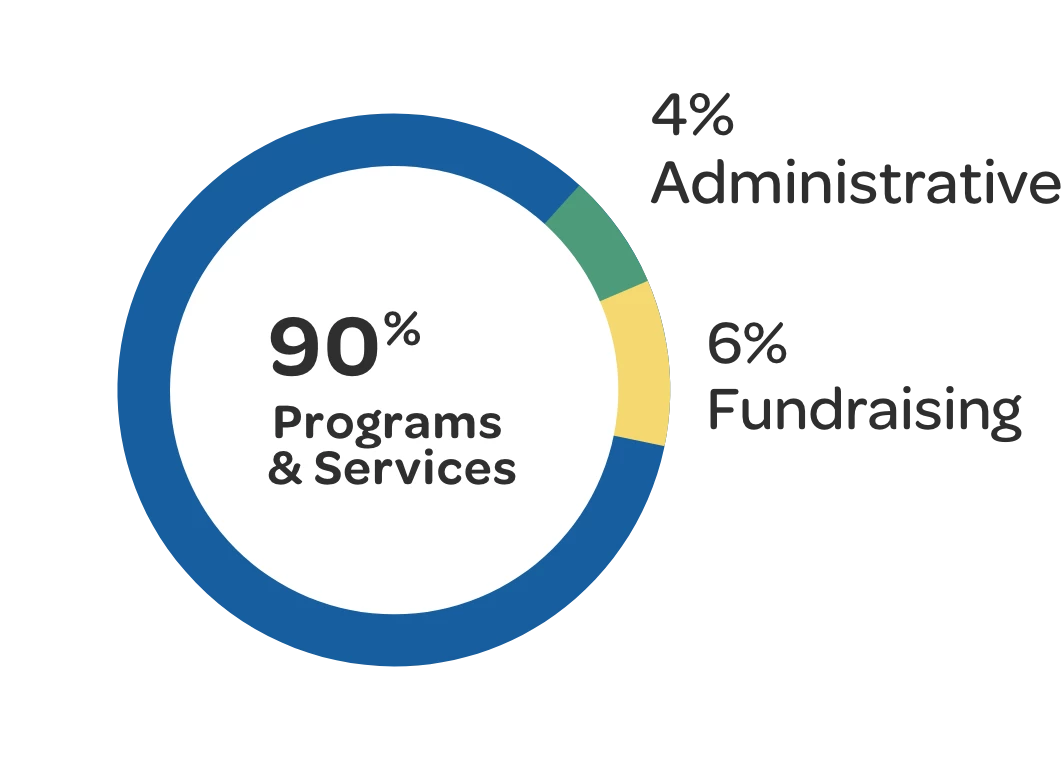CHICAGO – This week, the Mayor’s Office briefed Chicago City Council members on the current status of the New Arrivals Mission, including federal advocacy, cost-saving measures, developments of alternative shelter models, and a new funding request to be introduced in Budget Committee on Monday, April 15.
Funding the Mission
Costs for the Mission, since it began in August of 2022, through the end of 2023 have totaled $295 million. The City of Chicago has spent $72 million out of its Corporate Fund, which accounts for 24 percent of the City’s total costs for the Mission. Supplementing the City funding is $80 million in grants from the State of Illinois, which accounts for 27 percent of the total. The remaining $143 million, or 49 percent, was funded through a combination of direct federal grants and pass-through federal grants.
Recent briefings for alderpersons centered on a new funding request that will supplement the investments by Cook County and the State of Illinois with $70 million from the City’s assigned fund balance reserve. This is in addition to the City’s initial allocation of $150 million in its FY2024 budget, voted on and approved by City Council in November of 2023.
This funding request is based on a rigorous analysis of arrival patterns over the past two years, ensuring that the City will be prepared should there be any sudden increases in new arrivals sent by Texas Governor Greg Abbott. This funding enables the City to provide greater coordination, collaboration, and resources dedicated to the Mission, and continue investments toward building a unified shelter system to provide care and support for anyone experiencing homelessness, both new arrivals and other Chicagoans in need.
The City’s goal remains to provide short-term, emergency shelter to manage this humanitarian crisis, while making long-term investments in the City’s capacity to handle future challenges related to displacement and emerging migration patterns.
Background on the New Arrivals Mission
Since August 2022, Texas Governor Greg Abbott has bussed hundreds of thousands of asylum seekers across the United States. The City of Chicago has received the third-most asylum seekers of all major cities in the country, behind New York City and Denver, with nearly 39,000 new arrivals arriving in the City.
Because of the unprecedented nature of this humanitarian crisis, the City utilized Chicago Police Department district stations, and both O’Hare and Midway airports as temporary staging areas, while working to stand up emergency temporary shelters. By November 2023, nearly 4,000 new arrivals were sleeping on police station floors while almost 1,000 were sleeping in airport terminals, and hundreds in tents outdoors in many Chicago communities.
The City of Chicago, in partnership with the State of Illinois and Cook County, has worked to support new arrivals on the path to self-sufficiency by providing basic necessities including food, temporary emergency shelter, urgent medical care, education, vaccines, and case management and resettlement supports. At its peak, the City provided temporary emergency shelter to more than 15,000 new arrivals through a network of nearly 30 City-operated shelters while receiving more than 2,000 new arrivals per week. Since August 2022, Chicago Public Schools in partnership with the Chicago Teachers Union has enrolled 11,692 children who meet three newcomer criteria (i.e. Students in temporary living situations, entered after August 2022, home language is not English).
As part of the partnership with the State, shelter residents receive wrap-around services to aid them on their path to independence. These services include Benefits Enrollment, Temporary Protective Status (TPS) and work authorization workshops, and resettlement assistance. The City’s partnership with the State has successfully resettled or reunited more than 21,500 new arrivals.
In December, the City decommissioned the use of all police districts and airports, successfully transitioning all new arrivals into temporary emergency shelter. This effort involved collaboration with the Department of Family and Support Services (DFSS), the Office of Emergency Management and Communications, Fleets and Facilities Management, Chicago Department of Aviation, Chicago Park District, the Chicago Police Department, and the Office of Budget & Management.
Alternative Shelter Models
The City has worked diligently to reduce the substantial cost of shelter operations and staffing through a variety of partnerships and shelter models, including intergovernmental agreements, philanthropic partnerships, community-based organizations, and partnership with the faith community. In September, DFSS released a Request for Proposals (RFP) for Community-Based Organizations to staff and operate shelter sites. Two sites have been selected to transition toward a community model for shelter operations. A second RFP will be released later this month.
In November, Mayor Johnson joined faith leaders in announcing the Unity Initiative, a collaboration with Chicago’s faith community to provide temporary shelter and resettlement services for asylum seekers. The Unity Initiative, led by Pastor John Zayas of Grace and Peace Church, activated 10 churches and faith institutions, providing shelter and resettlement services for over 200 new arrivals.
Earlier this month, Mayor Johnson announced a unique partnership with the Archdiocese of Chicago, Cook County, and the Zakat Foundation to open a temporary shelter for as many as 320 people at the former St. Bartholomew parish convent and school. This partnership required months of careful planning to align all partners. It will be fully funded and operated by the Zakat Foundation at no cost to the City.
Federal Advocacy
Mayor Johnson continues to pursue federal intervention to manage this federal crisis. At weekly meetings with the White House, the Department of Homeland Security, and the Federal Emergency Management Agency, the Johnson Administration has put forward the following asks: flexible federal funding to cover the costs of shelter and related expenses, nationwide coordination of resettlement, expedited processing of TPS and employment authorization documents, and expansion of TPS and work permits to all non-citizens.
Cost Savings
The City has worked to reduce costs by renegotiating its contract with Favorite Staffing multiple times to substantially lower contractual reimbursement rates and to increase local hiring. The percentage of shelter staff hired from the region is nearly 53% with Chicago residents being 44% of all Favorite employees. This is up from 17% of the workforce being Chicago residents when the Administration first challenged Favorite to shift to prioritizing local hiring.
The City has also reduced costs by decommissioning its smallest and most expensive shelters. As part of that strategy, Chicago Park District sites are in the process of being returned to communities for normal park programming. By the end of this April, the City will have reduced its shelter site total from 27 to 16.
Through shelter consolidation and continued partnership with the County and the State, the City anticipates saving over $211 million in costs over the course of the year.






